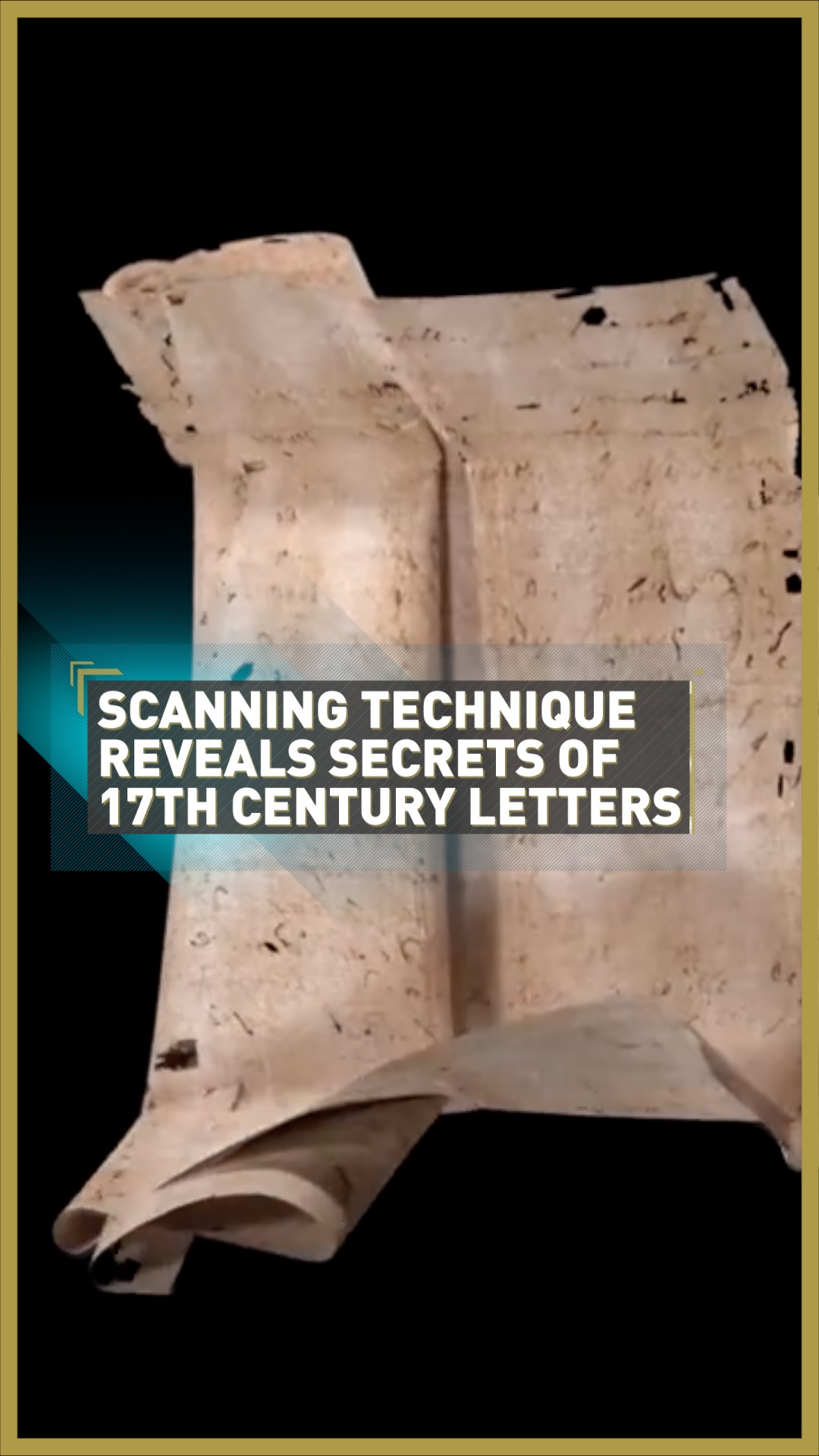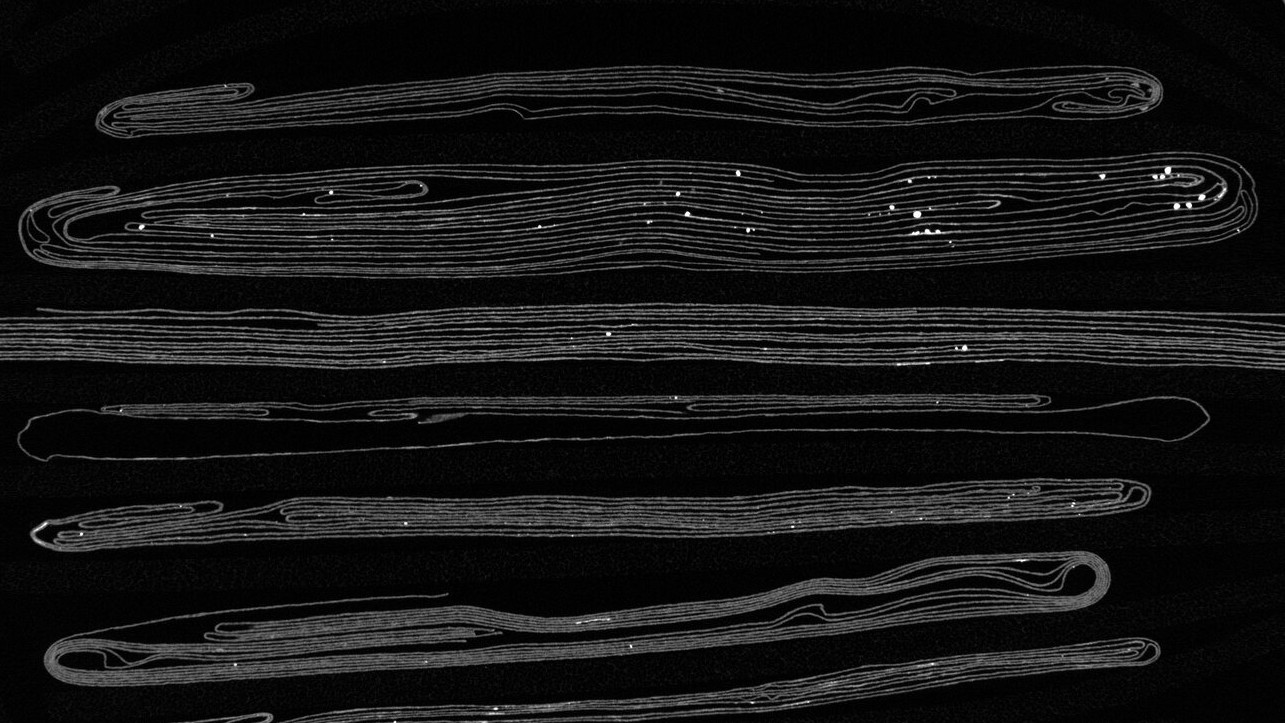01:06

An international team of researchers has revealed the contents of an intricately folded 17th century letter – without having to open it.
The Unlocking History research group applied computational flattening algorithms to x-ray microtomography scans of undelivered and unopened letters from the late 1600s, stored inside a postal trunk.
The letters' senders had closed them using "letterlocking," a method of folding and securing single sheets of paper to become their own envelope. Until now the letters' contents remained hidden because scientists were afraid of causing damage.
The scanning technique used x-rays to see inside the document, slice by slice, to create a 3D image.

The chest containing 2,600 letters dating from 1689-1706, including 600 that have never been opened. /Sound and Vision The Hague
The chest containing 2,600 letters dating from 1689-1706, including 600 that have never been opened. /Sound and Vision The Hague
The first letter uncovered was dated July 31, 1697, from Jacques Sennacques to his cousin Pierre Le Pers, a French merchant in The Hague, asking for a certified copy of a death notice.
In it, Sennacques wrote: "It has been a few weeks since I wrote to you in order to ask you to have drawn up for me a legalized excerpt of the death of sieur Daniel Le Pers, which took place in The Hague in the month of December 1695, without hearing from you. I am writing to you a second time in order to remind you of the pains that I took on your behalf. It is important to me to have this extract and you will do me a great pleasure to procure it for me and to send me at the same time news of your health and of all the family."
The missive is one of 2,600 letters in the collection, dating from 1689-1706. Around 600 have never been opened.

X-ray microtomography scans could reveal the contents of many unopened letters worldwide. /Unlocking History Archive
X-ray microtomography scans could reveal the contents of many unopened letters worldwide. /Unlocking History Archive
The research team, led by Jana Dambrogio and Amanda Ghassaei, say their research – published in Nature Communications – is the first instance of an unopened letter from Renaissance Europe being read without its seal being broken or damaged.
"We could simply have cut these letters open, but instead we took the time to study them for their hidden, secret and inaccessible qualities," the study reported. "Using virtual unfolding to read an intimate story that has never seen the light of day – and never even reached its recipient – is truly extraordinary."
Researchers from universities including King's College London, Queen Mary University London, Utrecht, Leiden, and the Massachusetts Institute of Technology (MIT) were involved in the project.
It is believed that virtual unfolding could allow access to unopened documents in collections around the world for the first time.
The letters were preserved by the chief postmasters of The Hague, Simon de Brienne and Marie Germain, and donated to The Hague's postal museum almost 100 years ago.

